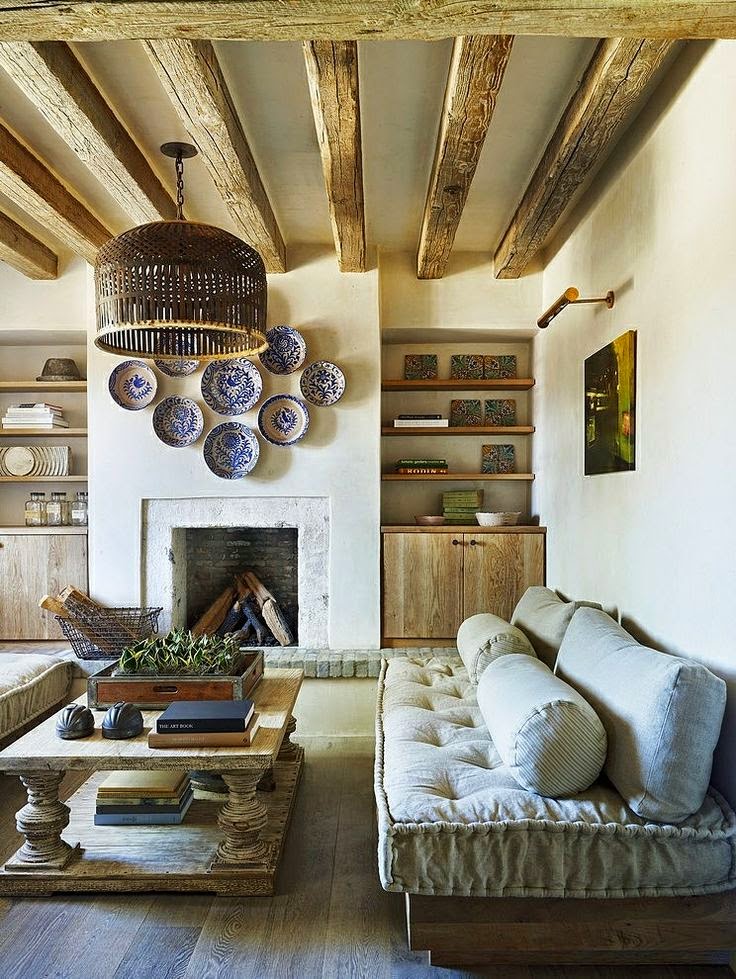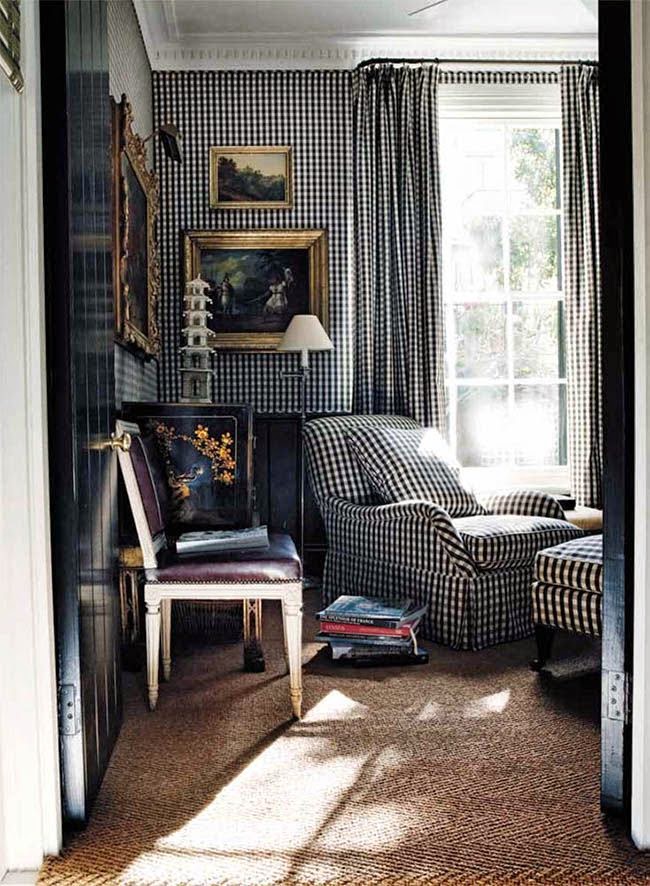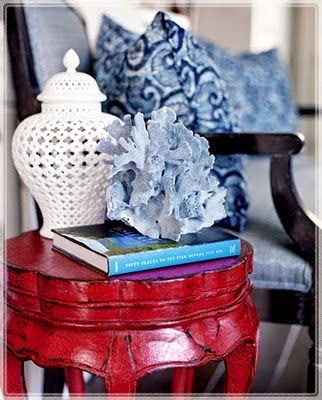“Bespoke Fabric Treatments: the Softer Side of Design”
joy of nesting
DOROTHY DRAPER above
In
addition to beauty, style and softness, fabric home furnishings add essential comfort to
our homes. What I love about using fabrics in my design projects is that
whatever else you have going on in the home—architecturally or
otherwise–fabric furnishings act as unifying elements “pulling it all together”
in a stylish, cohesive way.
I
look at professionally designed window treatments, upholstery, slipcovers, etc.
as an investment equal in importance to landscape design. To maintain this
investment it’s important to know which products will have lasting style; how
to protect them from the sun; how and where to cut expenditures; how to choose
designs that go well with your existing furnishings but are also great for
resale value; to use workrooms that produce quality craftsmanship; and developing
a realistic budget in relationship to the home’s value.
In
a recent, ongoing project I was assigned the tasks of designing and fabricating
a whole house of window coverings, choosing carpet, paint, floors, and
counters. The homeowners are returning clients with whom I worked fifteen years
ago on a custom home in the mountains. They’ve recently purchased a second
home, closer to town, which is manufactured. Because resale value is important,
everything I chose took that into consideration. However, convenience and
aesthetics were equally important to them so we chose low maintenance materials
and products with those in mind as well.
a recent, ongoing project I was assigned the tasks of designing and fabricating
a whole house of window coverings, choosing carpet, paint, floors, and
counters. The homeowners are returning clients with whom I worked fifteen years
ago on a custom home in the mountains. They’ve recently purchased a second
home, closer to town, which is manufactured. Because resale value is important,
everything I chose took that into consideration. However, convenience and
aesthetics were equally important to them so we chose low maintenance materials
and products with those in mind as well.
My approach was and is to be
economical because of the fact that it’s a manufactured home but I also know
that they want quality. So, we cut corners where we could, keeping and reusing
the existing drapery hardware and refinishing the existing kitchen and bathroom
cabinets rather than replacing them at great expense. And we chose flooring,
carpets, counters and window coverings that are incredibly beautiful but
practical too.
economical because of the fact that it’s a manufactured home but I also know
that they want quality. So, we cut corners where we could, keeping and reusing
the existing drapery hardware and refinishing the existing kitchen and bathroom
cabinets rather than replacing them at great expense. And we chose flooring,
carpets, counters and window coverings that are incredibly beautiful but
practical too.
When
choosing fabrics for this project, I kept most the fabrics under $60 a yard
with one around $70 a yard. We did simple box pleated valances, center draw draperies
on the existing decorative traverse rods, traversing sheers, and stationery
panels on rods and rings rather than elaborate, formal curtains. And in the
den, kitchen, master bath and guest room we did quality wooden blinds rather
than the more expensive shutters. So corners were cut where possible but richness
was added too.
choosing fabrics for this project, I kept most the fabrics under $60 a yard
with one around $70 a yard. We did simple box pleated valances, center draw draperies
on the existing decorative traverse rods, traversing sheers, and stationery
panels on rods and rings rather than elaborate, formal curtains. And in the
den, kitchen, master bath and guest room we did quality wooden blinds rather
than the more expensive shutters. So corners were cut where possible but richness
was added too.
The
fabric colors and patterns I chose are very subtle with two neutral, sheer
linen fabrics in the living and dining rooms; a cheery, Charlotte Moss cream
and light green apple motif printed cotton in the kitchen; a taupe and cream “Ikat”
inspired cotton in the den; a taupe and cream, subtle paisley print in the
guest room; a pale cognac stripe in the master bath; and a pale cognac and
cream print in the master bedroom that has a barely detectable, swirl pattern.
All the fabrics coordinate well with one another and the new carpets, floors,
paint and counters. They are light and “almost” neutral in color for resale
value but have enough panache for full enjoyment at present.
fabric colors and patterns I chose are very subtle with two neutral, sheer
linen fabrics in the living and dining rooms; a cheery, Charlotte Moss cream
and light green apple motif printed cotton in the kitchen; a taupe and cream “Ikat”
inspired cotton in the den; a taupe and cream, subtle paisley print in the
guest room; a pale cognac stripe in the master bath; and a pale cognac and
cream print in the master bedroom that has a barely detectable, swirl pattern.
All the fabrics coordinate well with one another and the new carpets, floors,
paint and counters. They are light and “almost” neutral in color for resale
value but have enough panache for full enjoyment at present.
DAVID MICHAEL MILLER above
When
I choose fabrics for upholstery projects, curtains, etc. I take several factors
into consideration. Does it go with the client’s architecture and existing
furniture? Is the fabric a good quality? Are the price ranges of the designs
and fabrics commensurate with the quality of the client’s home and furniture?
Does it reflect their lifestyle i.e. dogs, kids, etc.? How much sun exposure is
there? Is it a formal space (living or dining room) or a casual one (den; guest
room)? Do the fabric choices flow with the other rooms in the home? You don’t
want fabrics to be embarrassingly matchy-matchy but they should flow well. Are
there any windows that should be left blank? Admittedly it’s a lot to think
about but it becomes second nature after a while.
I choose fabrics for upholstery projects, curtains, etc. I take several factors
into consideration. Does it go with the client’s architecture and existing
furniture? Is the fabric a good quality? Are the price ranges of the designs
and fabrics commensurate with the quality of the client’s home and furniture?
Does it reflect their lifestyle i.e. dogs, kids, etc.? How much sun exposure is
there? Is it a formal space (living or dining room) or a casual one (den; guest
room)? Do the fabric choices flow with the other rooms in the home? You don’t
want fabrics to be embarrassingly matchy-matchy but they should flow well. Are
there any windows that should be left blank? Admittedly it’s a lot to think
about but it becomes second nature after a while.
Seating
pieces take well to fabric updates too. Most designers sell new sofas, chairs,
ottomans, settees, etc. as well as provide re-upholstery for existing sofas and
chairs. A typical sofa through a designer runs $4,000 to $5,500, a worthwhile
investment for a piece you’ll be able recover in later years. And the cost of
recovering an existing sofa through a designer is generally around $2,000 to
$3,000 so in twenty years, if you’ve chosen a well-constructed sofa, you’ll be
able to recover it at considerable savings. Years ago, I did a whole house for
clients who had come into my store and the first thing the client said to me was
“I’m thinking of buying a new, Pottery Barn sofa.” After a little questioning it
turns out she already had a very good quality, Hickory White sofa. I was able
to convince her to save the existing sofa and let me recover it. We saved her
money plus she retained a quality sofa with better cushions, frame and fabric.
pieces take well to fabric updates too. Most designers sell new sofas, chairs,
ottomans, settees, etc. as well as provide re-upholstery for existing sofas and
chairs. A typical sofa through a designer runs $4,000 to $5,500, a worthwhile
investment for a piece you’ll be able recover in later years. And the cost of
recovering an existing sofa through a designer is generally around $2,000 to
$3,000 so in twenty years, if you’ve chosen a well-constructed sofa, you’ll be
able to recover it at considerable savings. Years ago, I did a whole house for
clients who had come into my store and the first thing the client said to me was
“I’m thinking of buying a new, Pottery Barn sofa.” After a little questioning it
turns out she already had a very good quality, Hickory White sofa. I was able
to convince her to save the existing sofa and let me recover it. We saved her
money plus she retained a quality sofa with better cushions, frame and fabric.
Sun
exposure is something I always consider when choosing fabrics for the products
we provide. In one recent living room project, the sun beat through very large
windows through much of the day and the old armchairs were quite faded. Since
the clients didn’t want their views obstructed by curtains, a good quality,
warm white upholstery fabric was chosen to recover them.
exposure is something I always consider when choosing fabrics for the products
we provide. In one recent living room project, the sun beat through very large
windows through much of the day and the old armchairs were quite faded. Since
the clients didn’t want their views obstructed by curtains, a good quality,
warm white upholstery fabric was chosen to recover them.
Fading won’t be a huge
issue because the new fabric is off white. Because the fabric is very good
quality (as I recall it was around $80 a yard), the chairs won’t need to be
recovered again for twelve years or so. Of course, you can get much more use
out of fabrics that don’t have that much sun exposure.
issue because the new fabric is off white. Because the fabric is very good
quality (as I recall it was around $80 a yard), the chairs won’t need to be
recovered again for twelve years or so. Of course, you can get much more use
out of fabrics that don’t have that much sun exposure.
HOUSE BEAUTIFUL above
Shiree’s
Cheat Sheet
Cheat Sheet
-
Adding
a lining and inner lining to curtain panels will protect the fabric from sun
exposure and create a rich, full looking curtain.
-
Choose
textured or slightly patterned fabric for sofas in medium to medium-light color
ranges. Textures and patterns obscure stains while medium range colors obscure
fading.
MEADE DESIGN GROUP above
THOM FELICIA above

















